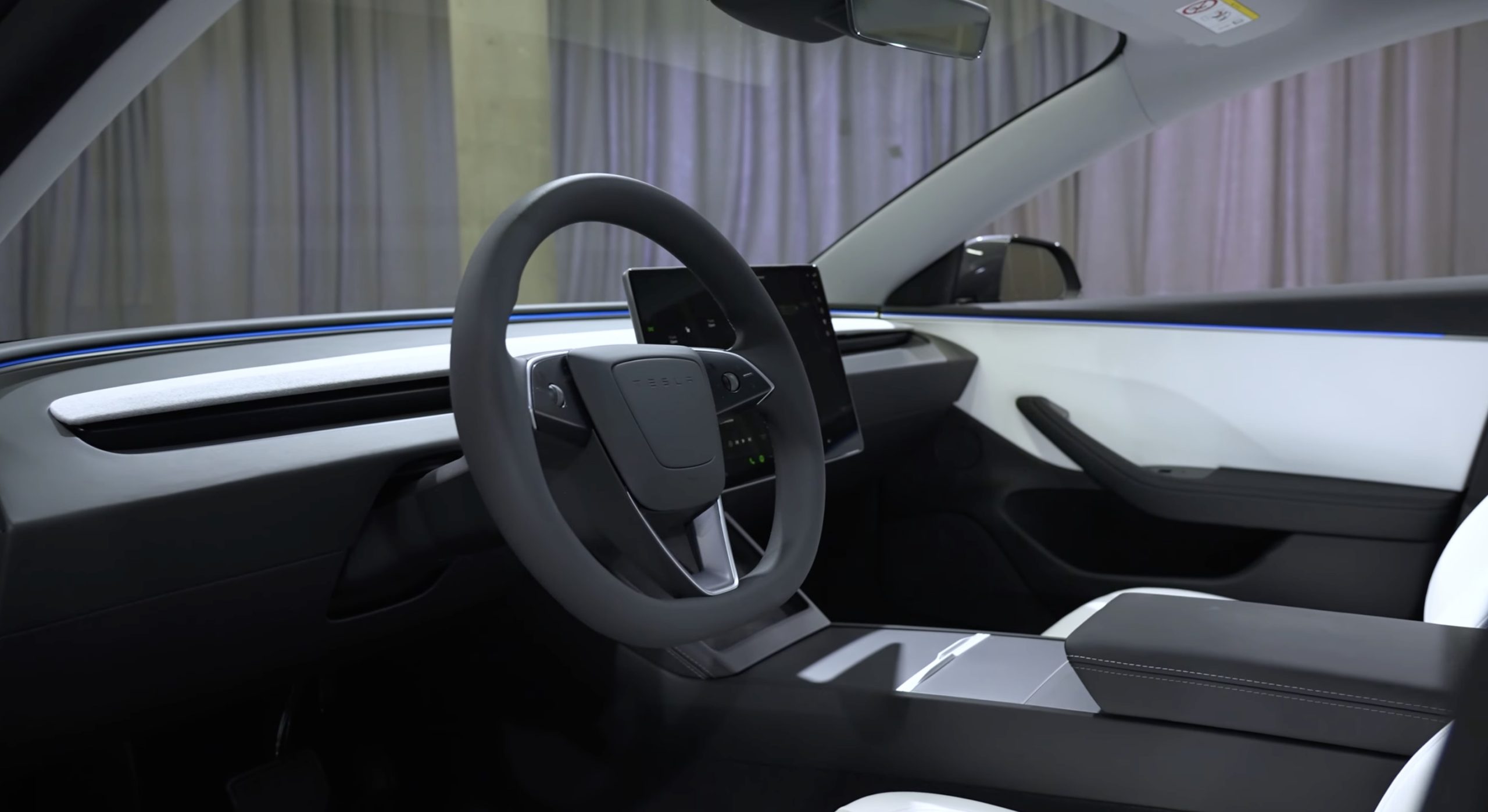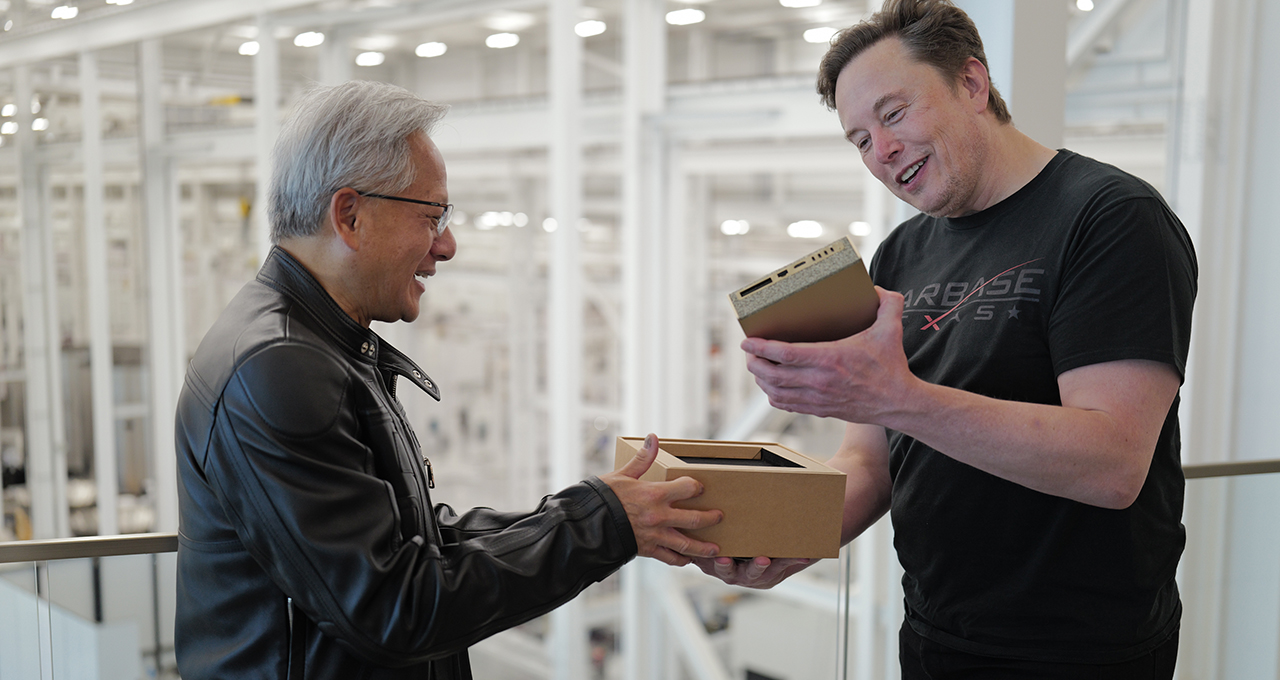Elon Musk
SpaceX President meets India Minister after Starlink approval
Starlink’s India debut gets a boost as Gwynne Shotwell meets Comms Minister Scindia. Talks focused on Digital India’s goals.

SpaceX’s Starlink India expansion gained momentum as SpaceX President and COO Gwynne Shotwell met with Communications Minister Jyotiraditya Scindia on Tuesday, following the company’s recent telecom license approval. The discussions focused on satellite communications to advance Digital India’s connectivity goals.
“Had a productive meeting with Ms. Gwynne Shotwell, President & COO of SpaceX, on India’s next frontier in connectivity. We delved into opportunities for collaboration in satellite communications to power Digital India’s soaring ambitions and empower every citizen across the country,” Scindia said.
India’s Communications Minister emphasized the transformative potential of satellite technologies, while Shotwell expressed gratitude for the license. Scindia noted: “Ms. Shotwell appreciated the license granted to Starlink, calling it a great start to the journey.”
Starlink India cleared a major regulatory hurdle after the Department of Telecommunications granted it a Global Mobile Personal Communication by Satellite (GMPCS) license. SpaceX secured the approval after a three-year wait.
In April, Starlink executives, including Vice President Chad Gibbs and Senior Director Ryan Goodnight, met Commerce Minister Piyush Goyal to discuss investments and partnerships, laying the groundwork for market entry. India’s satellite internet sector is heating up, with Eutelsat OneWeb and Reliance Jio also securing licenses, while Amazon’s Kuiper awaits approval.
Starlink India’s license enables SpaceX to initiate commercial operations within two months. The service will reportedly offer high-speed internet for ₹3,000 per month with unlimited data, requiring a ₹33,000 hardware kit, including a dish and router, targeting underserved and remote regions.
Starlink’s entry into India builds on its global network of over 7,000 satellites, designed to deliver low-latency internet to areas with limited broadband access. The company’s collaboration with Indian authorities and telecom giants like Reliance Jio and Bharti Airtel for distribution underscores its commitment to bridging the digital divide.
As Starlink prepares to launch services, its discussions with Scindia signal deepening ties with India’s government to support Digital India’s vision. “Satellite technologies are relevant and transformative,” Scindia noted, highlighting their role in empowering citizens. Starlink’s India expansion positions it to compete in a growing market, driving innovation and connectivity for millions in rural and remote areas.

Elon Musk
Tesla Full Self-Driving v14.2.1 texting and driving: we tested it
We decided to test it, and our main objective was to try to determine a more definitive label for when it would allow you to grab your phone and look at it without any nudge from the in-car driver monitoring system.

On Thursday, Tesla CEO Elon Musk said that Full Self-Driving v14.2.1 would enable texting and driving “depending on [the] context of surrounding traffic.”
Tesla CEO Elon Musk announces major update with texting and driving on FSD
We decided to test it, and our main objective was to try to determine a more definitive label for when it would allow you to grab your phone and look at it without any nudge from the in-car driver monitoring system.
I’d also like to add that, while Tesla had said back in early November that it hoped to allow this capability within one to two months, I still would not recommend you do it. Even if Tesla or Musk says it will allow you to do so, you should take into account the fact that many laws do not allow you to look at your phone. Be sure to refer to your local regulations surrounding texting and driving, and stay attentive to the road and its surroundings.
The Process
Based on Musk’s post on X, which said the ability to text and drive would be totally dependent on the “context of surrounding traffic,” I decided to try and find three levels of congestion: low, medium, and high.
I also tried as best as I could to always glance up at the road, a natural reaction, but I spent most of my time, during the spans of when it was in my hand, looking at my phone screen. I limited my time looking at the phone screen to a few seconds, five to seven at most. On local roads, I didn’t go over five seconds; once I got to the highway, I ensured the vehicle had no other cars directly in front of me.
Also, at any time I saw a pedestrian, I put my phone down and was fully attentive to the road. I also made sure there were no law enforcement officers around; I am still very aware of the law, which is why I would never do this myself if I were not testing it.
I also limited the testing to no more than one minute per attempt.
I am fully aware that this test might ruffle some feathers. I’m not one to text and drive, and I tried to keep this test as abbreviated as possible while still getting some insight on how often it would require me to look at the road once again.
The Results
Low Congestion Area
I picked a local road close to where I live at a time when I knew there would be very little traffic. I grabbed my phone and looked at it for no more than five seconds before I would glance up at the road to ensure everything was okay:
In full: the Low Congestion Area pic.twitter.com/6DqlBnekPn
— TESLARATI (@Teslarati) December 4, 2025
Looking up at the road was still regular in frequency; I would glance up at the road after hitting that five-second threshold. Then I would look back down.
I had no nudges during this portion of the test. Traffic was far from even a light volume, and other vehicles around were very infrequently seen.
Medium Congestion Area
This area had significantly more traffic and included a stop at a traffic light. I still kept the consecutive time of looking at my phone to about five seconds.
I would quickly glance at the road to ensure everything was okay, then look back down at my phone, spending enough time looking at a post on Instagram, X, or Facebook to determine what it was about, before then peeking at the road again.
There was once again no alert to look at the road, and I started to question whether I was even looking at my phone long enough to get an alert:
In full: the Medium Congestion Area pic.twitter.com/gnhIfBVe6Q
— TESLARATI (@Teslarati) December 4, 2025
Based on past versions of Full Self-Driving, especially dating back to v13, even looking out the window for too long would get me a nudge, and it was about the same amount of time, sometimes more, sometimes less, I would look out of a window to look at a house or a view.
High Congestion Area
I decided to use the highway as a High Congestion Area, and it finally gave me an alert to look at the road.
As strange as it is, I felt more comfortable looking down at my phone for a longer amount of time on the highway, especially considering there is a lower chance of a sudden stop or a dangerous maneuver by another car, especially as I was traveling just 5 MPH over in the left lane.
This is where I finally got an alert from the driver monitoring system, and I immediately put my phone down and returned to looking at the road:
In full: the High Congestion Area pic.twitter.com/K9rIn4ROvm
— TESLARATI (@Teslarati) December 4, 2025
Once I was able to trigger an alert, I considered the testing over with. I think in the future I’d like to try this again with someone else in the car to keep their eyes on the road, but I’m more than aware that we can’t always have company while driving.
My True Thoughts
Although this is apparently enabled based on what was said, I still do not feel totally comfortable with it. I would not ever consider shooting a text or responding to messages because Full Self-Driving is enabled, and there are two reasons for that.
The first is the fact that if an accident were to happen, it would be my fault. Although it would be my fault, people would take it as Tesla’s fault, just based on what media headlines usually are with accidents involving these cars.
Secondly, I am still well aware that it’s against the law to use your phone while driving. In Pennsylvania, we have the Paul Miller Law, which prohibits people from even holding their phones, even at stop lights.
I’d feel much more comfortable using my phone if liability were taken off of me in case of an accident. I trust FSD, but I am still erring on the side of caution, especially considering Tesla’s website still indicates vehicle operators have to remain attentive while using either FSD or Autopilot.
Check out our full test below:
Elon Musk
Tesla CEO Elon Musk announces major update with texting and driving on FSD
“Depending on context of surrounding traffic, yes,” Musk said in regards to FSD v14.2.1 allowing texting and driving.

Tesla CEO Elon Musk has announced a major update with texting and driving capabilities on Full Self-Driving v14.2.1, the company’s latest version of the FSD suite.
Tesla Full Self-Driving, even in its most mature and capable versions, is still a Level 2 autonomous driving suite, meaning it requires attention from the vehicle operator.
You cannot sleep, and you should not take attention away from driving; ultimately, you are still solely responsible for what happens with the car.
The vehicles utilize a cabin-facing camera to enable attention monitoring, and if you take your eyes off the road for too long, you will be admonished and advised to pay attention. After five strikes, FSD and Autopilot will be disabled.
However, Musk announced at the Annual Shareholder Meeting in early November that the company would look at the statistics, but it aimed to allow people to text and drive “within the next month or two.”
He said:
“I am confident that, within the next month or two, we’re gonna look at the safety statistics, but we will allow you to text and drive.”
“I am confident that, within the next month or two, we’re gonna look at the safety statistics, but we will allow you to text and drive.”
Does anyone think v14.3 will enable this? pic.twitter.com/N2yn0SK70M
— TESLARATI (@Teslarati) November 23, 2025
Today, Musk confirmed that the current version of Full Self-Driving, which is FSD v14.2.1, does allow for texting and driving “depending on context of surrounding traffic.”
Depending on context of surrounding traffic, yes
— Elon Musk (@elonmusk) December 4, 2025
There are some legitimate questions with this capability, especially as laws in all 50 U.S. states specifically prohibit texting and driving. It will be interesting to see the legality of it, because if a police officer sees you texting, they won’t know that you’re on Full Self-Driving, and you’ll likely be pulled over.
Some states prohibit drivers from even holding a phone when the car is in motion.
It is certainly a move toward unsupervised Full Self-Driving operation, but it is worth noting that Musk’s words state it will only allow the vehicle operator to do it depending on the context of surrounding traffic.
He did not outline any specific conditions that FSD would allow a driver to text and drive.
Elon Musk
NVIDIA CEO Jensen Huang commends Tesla’s Elon Musk for early belief
“And when I announced DGX-1, nobody in the world wanted it. I had no purchase orders, not one. Nobody wanted to buy it. Nobody wanted to be part of it, except for Elon.”

NVIDIA CEO Jensen Huang appeared on the Joe Rogan Experience podcast on Wednesday and commended Tesla CEO Elon Musk for his early belief in what is now the most valuable company in the world.
Huang and Musk are widely regarded as two of the greatest tech entrepreneurs of the modern era, with the two working in conjunction as NVIDIA’s chips are present in Tesla vehicles, particularly utilized for self-driving technology and data collection.
Nvidia CEO Jensen Huang regrets not investing more in Elon Musk’s xAI
Both CEOs defied all odds and created companies from virtually nothing. Musk joined Tesla in the early 2000s before the company had even established any plans to build a vehicle. Jensen created NVIDIA in the booth of a Denny’s restaurant, which has been memorialized with a plaque.
On the JRE episode, Rogan asked about Jensen’s relationship with Elon, to which the NVIDIA CEO said that Musk was there when nobody else was:
“I was lucky because I had known Elon Musk, and I helped him build the first computer for Model 3, the Model S, and when he wanted to start working on an autonomous vehicle. I helped him build the computer that went into the Model S AV system, his full self-driving system. We were basically the FSD computer version 1, and so we were already working together.
And when I announced DGX-1, nobody in the world wanted it. I had no purchase orders, not one. Nobody wanted to buy it. Nobody wanted to be part of it, except for Elon.
He goes ‘You know what, I have a company that could really use this.’ I said, Wow, my first customer. And he goes, it’s an AI company, and it’s a nonprofit and and we could really use one of these supercomputers. I boxed one up, I drove it up to San Francisco, and I delivered it to the Elon in 2016.”
The first DGX-1 AI supercomputer was delivered personally to Musk when he was with OpenAI, which provided crucial early compute power for AI research, accelerating breakthroughs in machine learning that underpin modern tools like ChatGPT.
Tesla’s Nvidia purchases could reach $4 billion this year: Musk
The long-term alliance between NVIDIA and Tesla has driven over $2 trillion in the company’s market value since 2016.








